

Price: $400
Weight: 1 lb. 2 oz. (women’s small)
What we like: Extremely warm, comfortable, and durable for cold-weather backcountry outings.
What we don’t: Heavy and lacks the versatility for year-round use.
See the Women's Gamma Heavyweight See the Men's Gamma MX Hoody
Slotting in as the warmest and most weather-ready softshell in Arc’teryx’s Gamma family, the Gamma Heavyweight Hoody (formerly the Gamma MX) is built for serious backcountry pursuits like skiing and ice climbing. Throughout a season of testing in the variable North Shore and Cascade mountains of the Pacific Northwest, we found the jacket to be extremely comfortable with a cozy fleece lining, impressively durable with a robust outer shell, and highly wind-resistant. It’s fairly heavy and runs far too warm for mild conditions, but it’s a great match for alpine missions and demanding cold-weather adventures. Below we break down our experiences with the Gamma Heavyweight. To see how it stacks up to the competition, check out our article on the best softshell jackets.
Editor's note: We updated this review on September 20, 2024, to reflect changes to the model name—the women's version is now the Gamma Heavyweight, while the men's retains the old Gamma MX designation. We also updated several product specifications and references, including adding a comparison to Patagonia's R2 CrossStrata Hoody in the Competition section.
In short, the Arc’teryx Gamma Heavyweight Hoody does a decent job repelling powdery snow and light precipitation. To help protect against the elements, it has a durable water repellent (DWR) finish along the exterior, the brand's well-respected StormHood that provides great all-around coverage, and a Fortius 2.0 softshell fabric that’s proven to be an excellent wind blocker. In fact, I’ve transitioned on ridgelines in bitterly cold gusts without growing cold or uncomfortable. I have had moisture penetrate the shell and migrate to my baselayer in heavy rainstorms typical of the West Coast, but this wasn’t too surprising given the jacket’s construction (softshell jackets aren’t designed to be a primary layer of defense). If a deluge or big snowstorm is in the forecast, I reach for a waterproof hardshell instead.
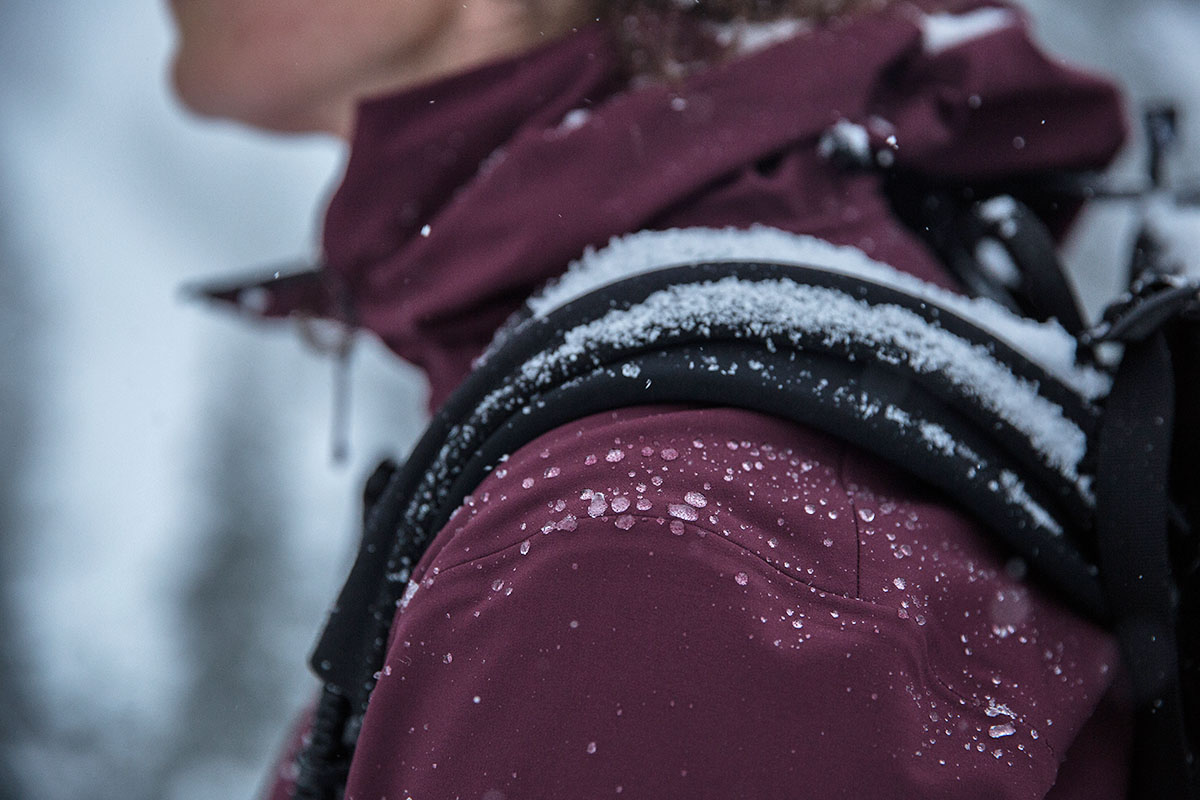
With a warm and cozy fleece lining and burly outer fabric, the Gamma Heavyweight Hoody is purpose-built for truly frigid weather. My first few outings with the jacket were especially telling: I tend to run cold while backcountry skiing, so the Gamma Heavyweight seemed like an obvious choice. However, during my first tour with the jacket, I quickly overheated and promptly tossed it in my pack for the rest of the day. My experience was similar on follow-up outings, where I was forced to shed the jacket whenever temperatures rose above freezing.
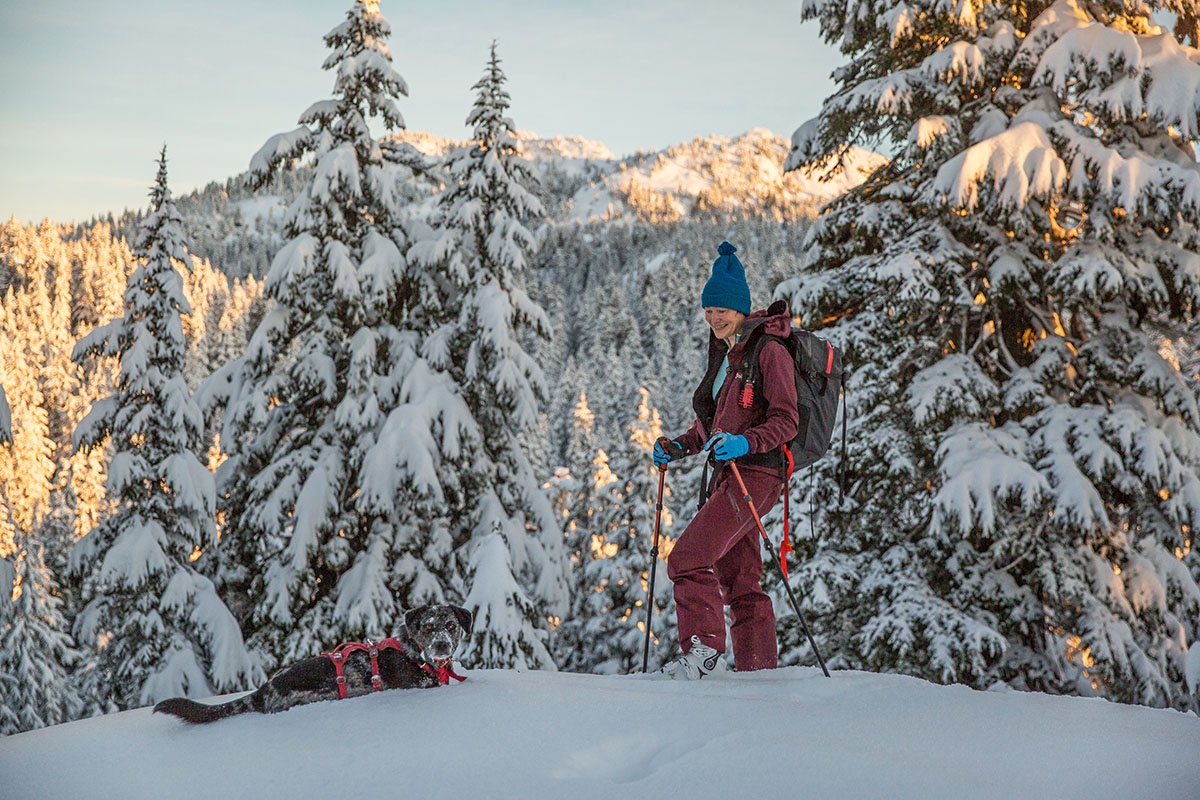
All in all, I’ve found that the Gamma Heavyweight is overkill for mild conditions, longer tours, and other aerobic activities when you’re likely to work up a serious sweat. That said, it’s an excellent match for lower-output pursuits in below-freezing temps or frigid alpine adventures (I wear it while taking photos on cold ski days, transitioning in windy conditions, etc.). And to help seal out the cold, the jacket features elasticized cuffs that fit snugly and prevent drafts from entering, a tall collar with soft fleece at the chin, and the aforementioned adjustable StormHood that can be cinched tightly over a ski helmet or hat.
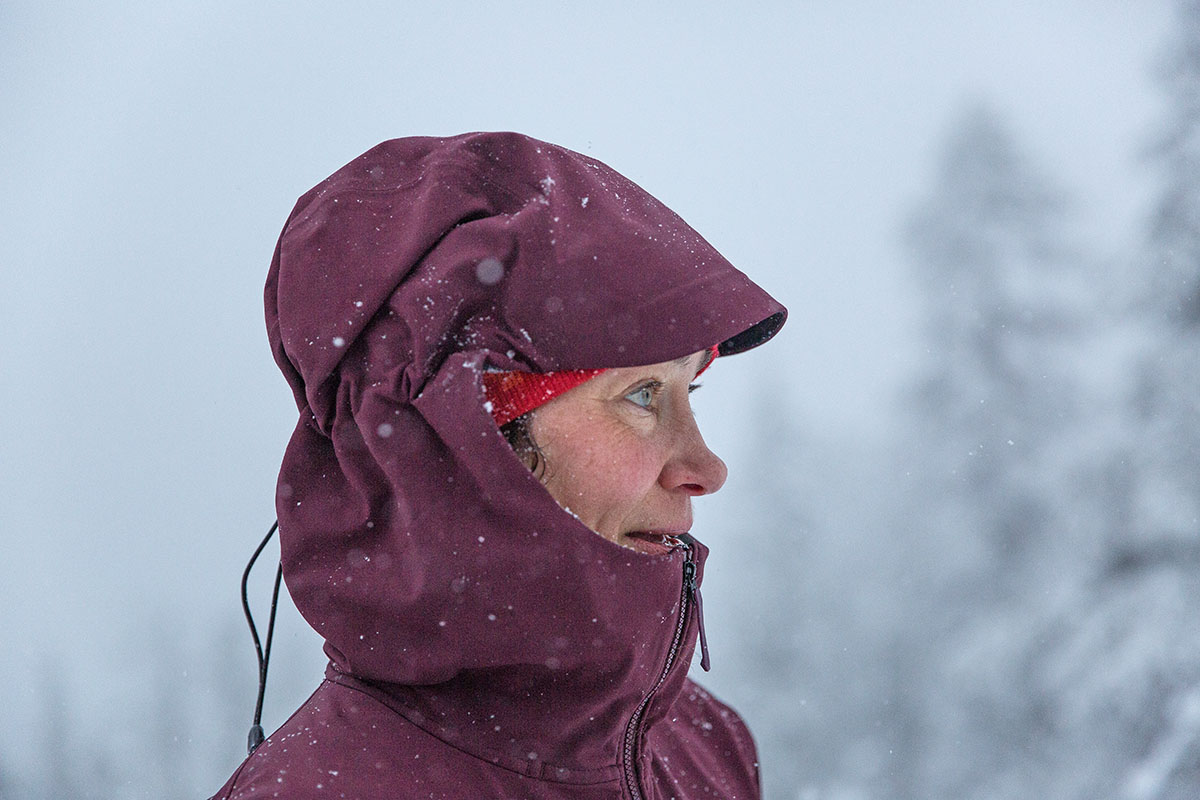
The Gamma Heavyweight is great in cold weather, but the trade-off is that breathability suffers even in mild temperatures. To be clear, the softshell fabric breathes much better than a 3-layer hardshell jacket, and I’m able to wear the Gamma Heavyweight on short tours and while doing yo-yo laps in temperatures below ~25 degrees Fahrenheit. However, in above-freezing conditions or during extended exertion, the Gamma simply isn’t breathable enough to prevent me from overheating (and this is coming from someone who doesn’t typically sweat while touring).
The pockets do have mesh linings and can be opened to help with ventilation and airflow, but I’ve found that I need to fully open the front zipper as well to dump enough heat. This is perfectly fine in dry conditions but not ideal when it’s snowing or sleeting. And to make matters worse, snow tends to stick to the inner fleece lining, which adds to the dampness. In the end, unless you truly need the winter-ready warmth, I recommend going with a more versatile and breathable option like the uninsulated Gamma or Gamma Lightweight.
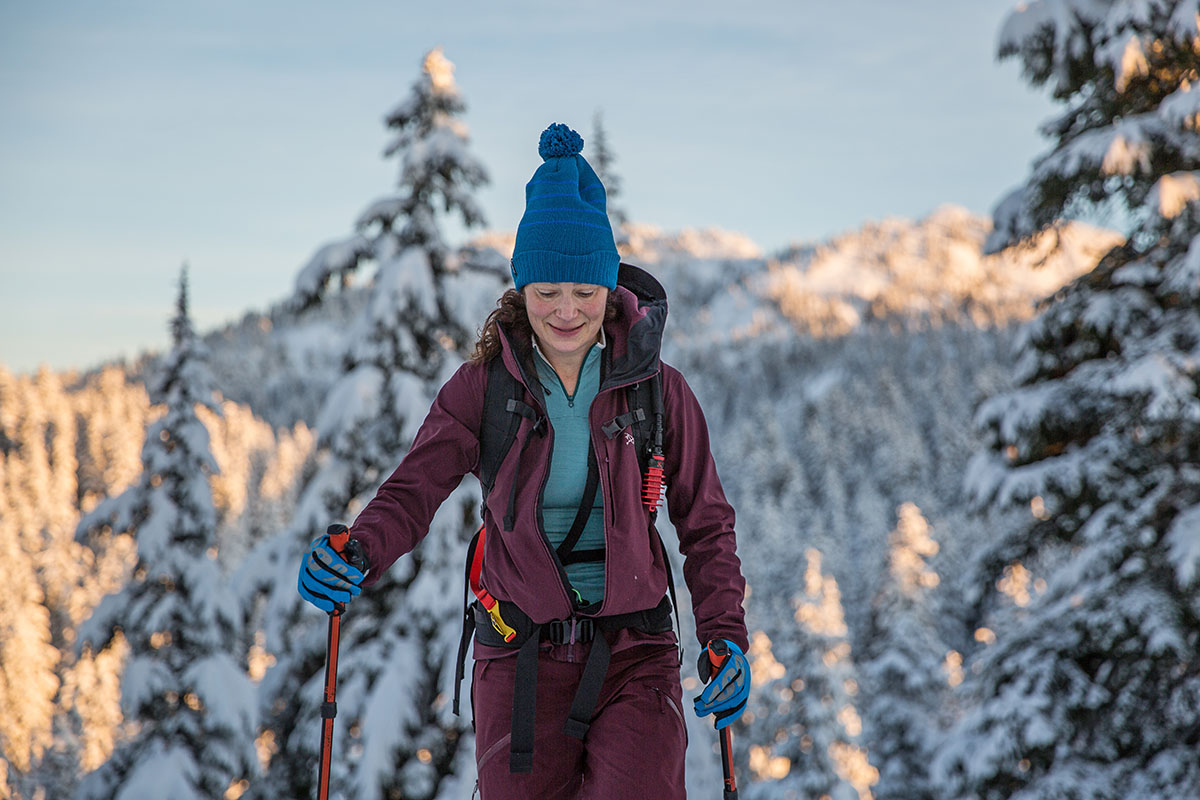
My women’s small clocked in at a fairly hefty 1 pound 2 ounces (it's listed at 1 lb. 1.5 oz.), which is to be expected given the level of warmth but is still heavy for a softshell. You can go much lighter in this category with options like Patagonia's R1 CrossStrata Hoody (10.5 oz.) or Arc’teryx’s Gamma Lightweight Hoody (9.2 oz.), although both of those options lack insulation and are designed for warmer temperatures. Another winter-ready option like the Mammut Ultimate VII SO (15.6 oz.) is closer in weight, although these insulated softshells are often too burly for backcountry use—especially since you’re usually also packing a waterproof layer. And the Gamma Heavyweight doesn’t come with a stuff sack, nor can it be packed into a pocket, but it’s pretty easy to compress into its own hood to about the size of a large cantaloupe.
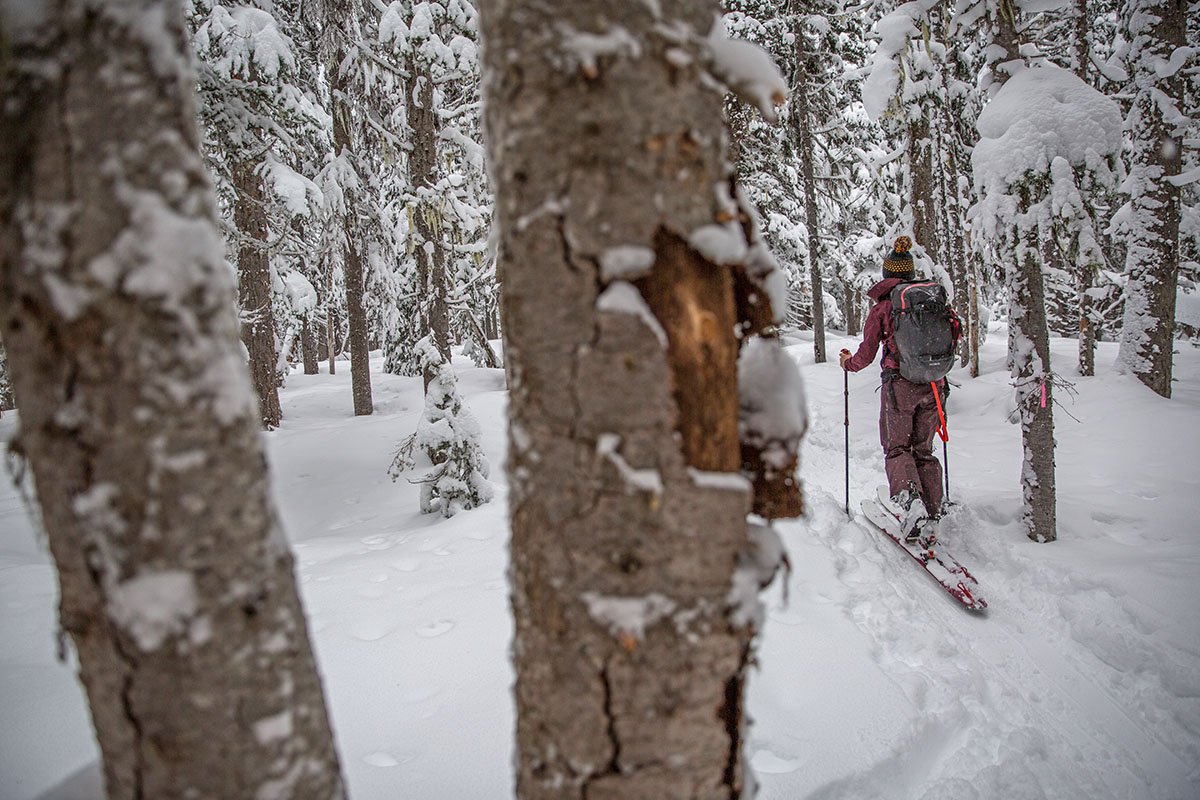
As we found with the lighter Gamma Hoody, the Arc'teryx Gamma Heavyweight is a real standout in the comfort department. The Fortius 2.0 softshell fabric incorporates 16% elastane, which translates to excellent stretch and mobility (I imagine the jacket would be great for cold-weather rock or ice climbing). Additionally, the articulated elbows reduce bunching, and the gusseted underarms enable me to reach overhead easily and without restriction. And on the inside, the interior is noticeably soft and plush and feels cozy against bare skin. In fact, I frequently wear the jacket over just a t-shirt.
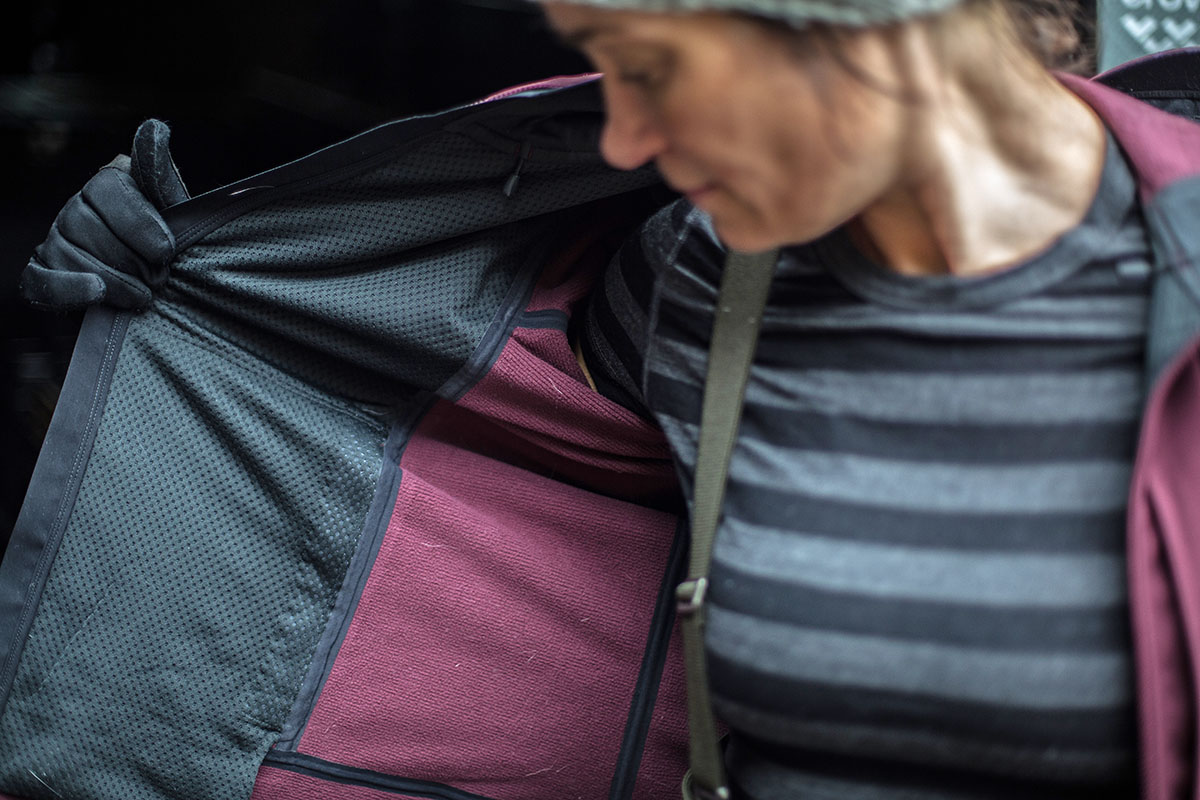
Put simply, build quality is up to snuff and meets the high standards we set for Arc’teryx gear. Despite regular mistreatment including numerous days in the backcountry, being thrown clumsily into our van and my ski backpack with sharp gear, and getting jumped on by an overly excited dog, the jacket shows no signs of wear or abrasion, and there are no loose threads or visible pilling. Further, the seams and toggles for the hood and hem are all holding up well, and the zippers are running smoothly (bonus: I love the long plastic tabs that make them easy to move up and down). All in all, from a construction and quality standpoint, I couldn’t be happier.

Arc’teryx does hoods extremely well, and their StormHood design is a real winner. First, it’s helmet-compatible and offers great all-around coverage without impeding peripheral vision. Second, the drawcords are easy to manipulate even with gloves on, and the hood can be effectively tightened over just a hat or beanie. And finally, the laminated brim holds its shape nicely and shields against precipitation dripping onto my face and eyes. Taken together, it’s a highly functional and well-built design that I’m always excited to see on Arc’teryx jackets.
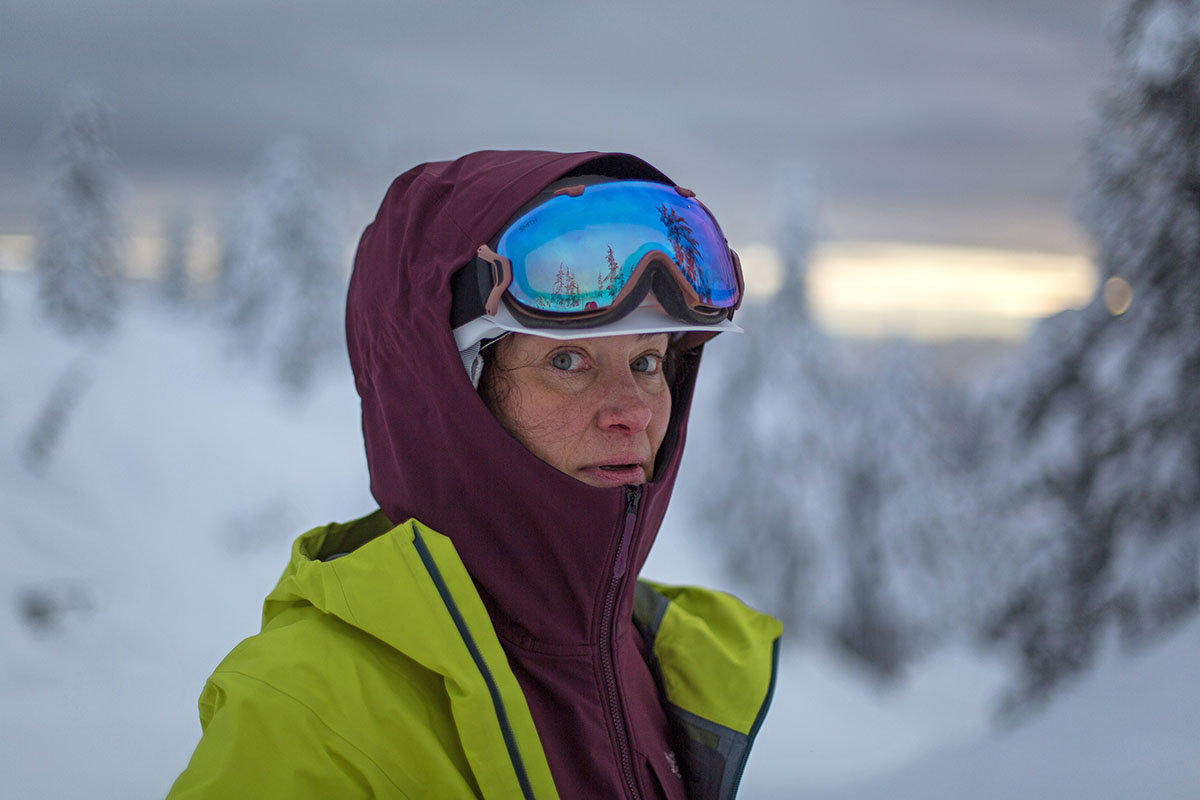
The Gamma Heavyweight comes adequately appointed in the storage department with three zippered pockets, including two mesh-lined hand pockets and one mesh-lined chest pocket. Prior generations of the Gamma Heavyweight also sported a sleeve pocket for stowing items like a credit card or license, but I didn’t find the omission to be too impactful. The chest pocket is large enough to house a plus-sized iPhone, although I don’t keep my phone here unless it’s protected in a plastic bag. The hand pockets are also adequately sized, but they’re a bit snug if I’m wearing bulkier ski gloves (they work great with liner gloves). And the mesh lining inside all of the pockets is soft and fleece-like, which feels comfortable against bare hands and increases ventilation when the pockets are open.
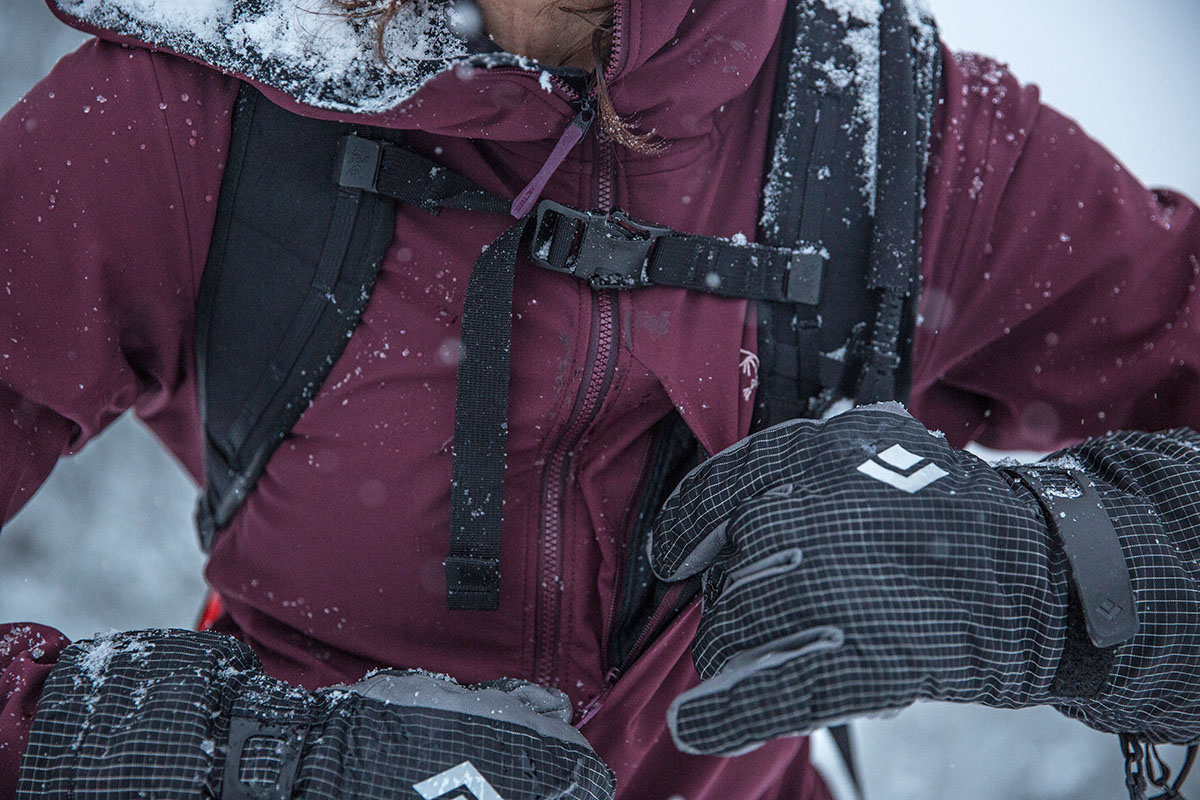
Arc’teryx labels the Gamma Heavyweight's fit as “regular,” and I agree with that designation. While not boxy, it’s roomy enough to accommodate baselayers and midlayers underneath. This cut also allows me to add another layer of insulation overtop when transitioning or taking photos (my go-to is Arc’teryx’s Cerium Hoody). To dial in fit, the hem can be easily cinched, and the sleeves are the perfect length for me (for reference, I’m 5’8” and wear a women’s small). Finally, the cuffs aren’t adjustable, but they’re snug enough to prevent drafts from entering and sport elasticized openings that make the jacket easy to get on and off.
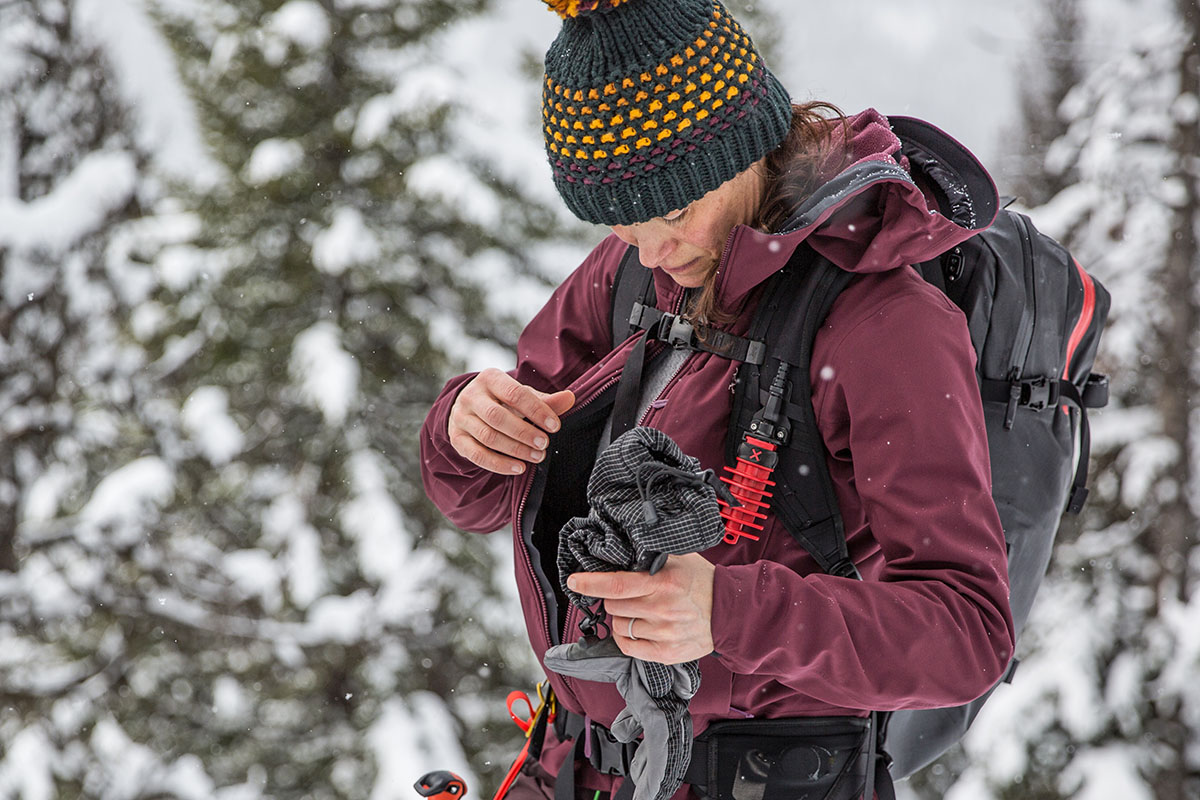
We put the women’s version of the Gamma Heavyweight to the test for this review, and Arc’teryx makes a nearly identical men’s variation. Despite still being called the Gamma MX Hoody (the women's name has since been updated to the Gamma Heavyweight), the men's model boasts the same overall construction and feature set. The only discernible differences are that the men’s Gamma MX Hoody checks in a little heavier at 1 pound 4.6 ounces, comes in different colorways, and has a longer center back length. Rounding out the collection, Arc'teryx offers a thigh-length Gamma Heavyweight Coat for women, a non-hooded Gamma MX Jacket for men, and Gamma MX pants for both men and women (plus an additional straight-leg variation for women).
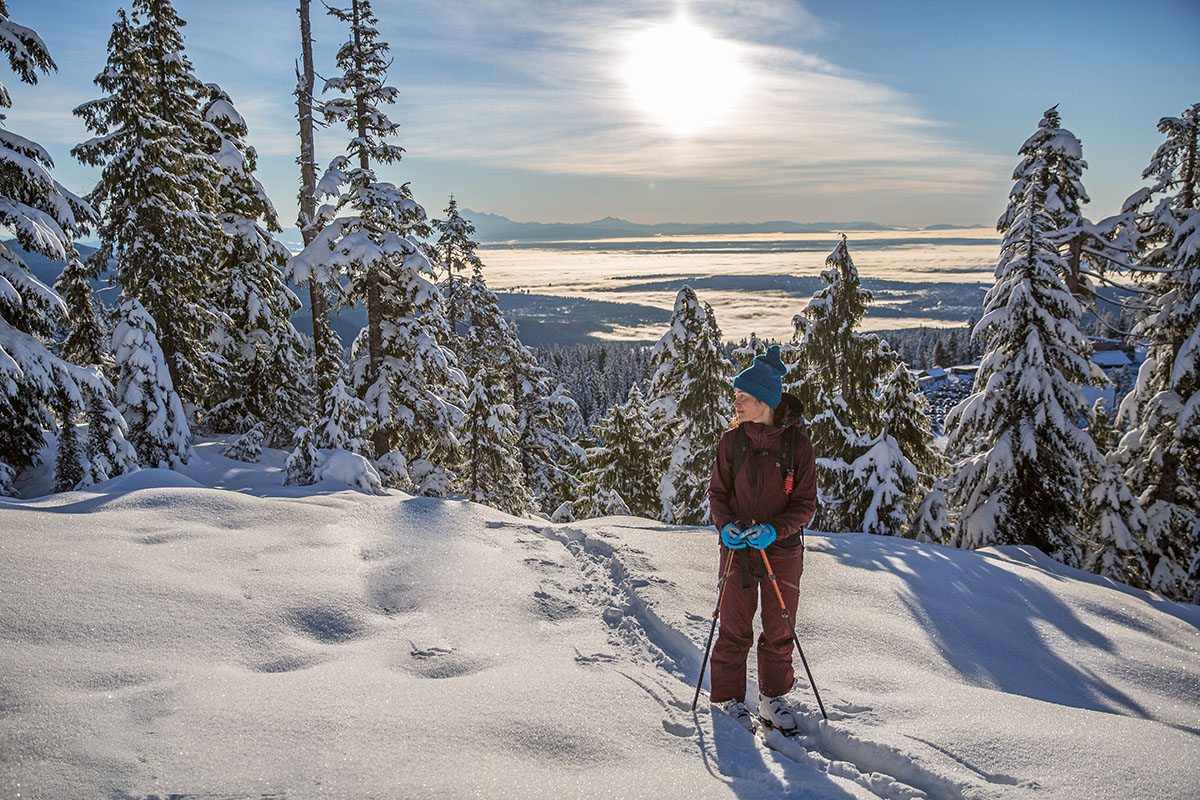
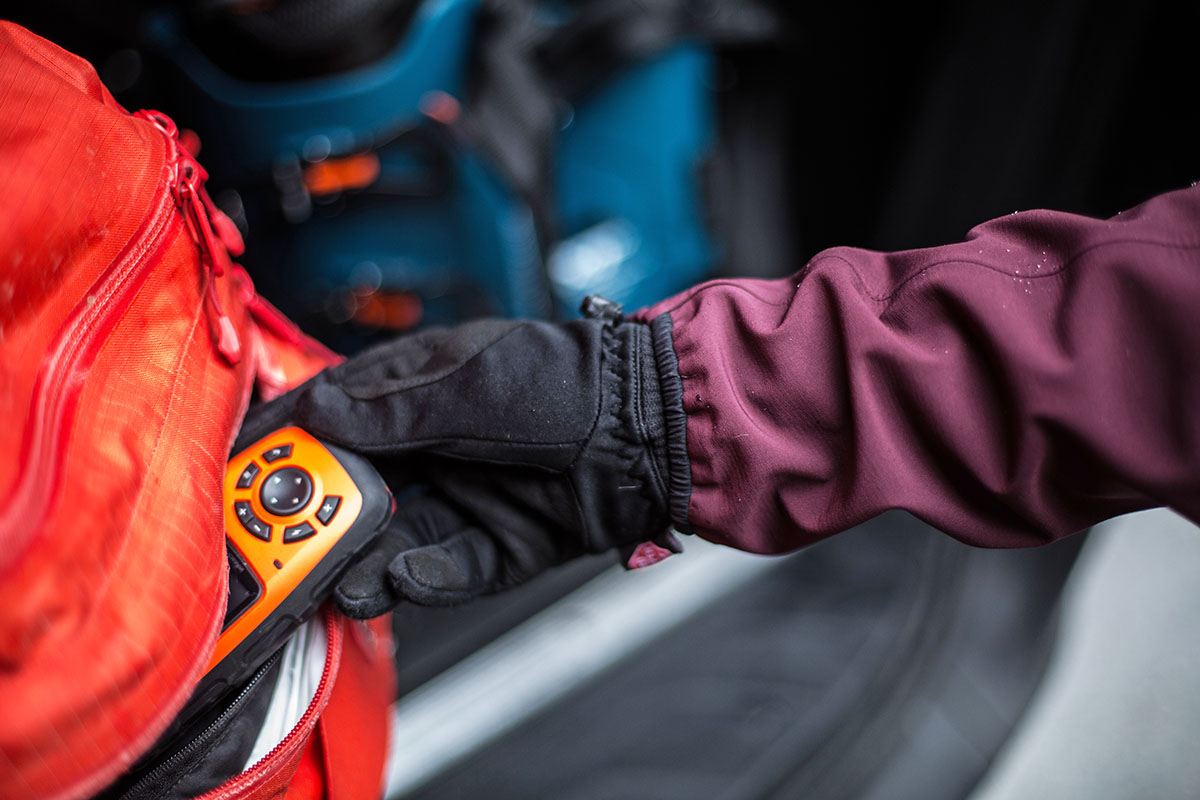
| Jacket | Price | Weight | Category | Softshell Type | Pockets |
|---|---|---|---|---|---|
| Arc'teryx Gamma Heavyweight | $400 | 1 lb. 1.5 oz. | Performance/casual | Stretch woven w/fleece | 3 |
| Arc’teryx Gamma Hoody | $300 | 15.0 oz. | Performance/casual | Stretch woven w/backer | 2 |
| Arc’teryx Gamma Lightweight | $260 | 9.2 oz. | Performance | Double weave | 2 |
| Patagonia R2 CrossStrata | $229 | 14.8 oz. | Performance | Double weave | 6 |
| Mammut Ultimate VII SO | $289 | 15.6 oz. | Performance | 3L Gore-Tex Infinium | 2 |
Arc’teryx’s Gamma Heavyweight is the warmest softshell jacket in the Gamma lineup, but we think the Gamma Hoody is more versatile. Comparing the two, the Gamma Hoody is non-insulated with just a light brushed backer, which means it’s not a true cold-weather piece like the Heavyweight but is perfectly serviceable for mild conditions and shoulder-season temperatures. Like the Heavyweight, the Gamma Hoody also has a burly outer fabric that’s highly tear-resistant and hardwearing, and the lighter materials make it a much better breather. And from a features standpoint, the two are pretty similar: The Gamma Hoody has a helmet-compatible StormHood and a DWR finish for fending off light rain and snow, although it forgoes the Heavyweight's chest pocket. All in all, it’s not a high alpine-ready piece like the Heavyweight, but we consider the Gamma Hoody the more well-rounded option and a much better value at a full $100 less.
Arc’teryx also offers the Gamma Lightweight Hoody. This jacket checks in at 9.2 ounces but retains a fairly full feature set, including an adjustable StormHood (although it’s not helmet-compatible), two hand pockets, and a similar outer fabric as the Gamma Heavyweight that’s mobile and stretchy but also impressively durable. The Lightweight also wins out in breathability, and we found it to be a great match for summer and shoulder-season activities like hiking, biking, trail running, and backpacking (for more, see our in-depth Gamma Lightweight review). That said, it falls short of the Heavyweight in all-out protection and is too light to keep you warm in colder winter conditions. In the end, we think the mid-range Gamma hits the best middle ground of the bunch, but the Lightweight is a nice summer-specific option.
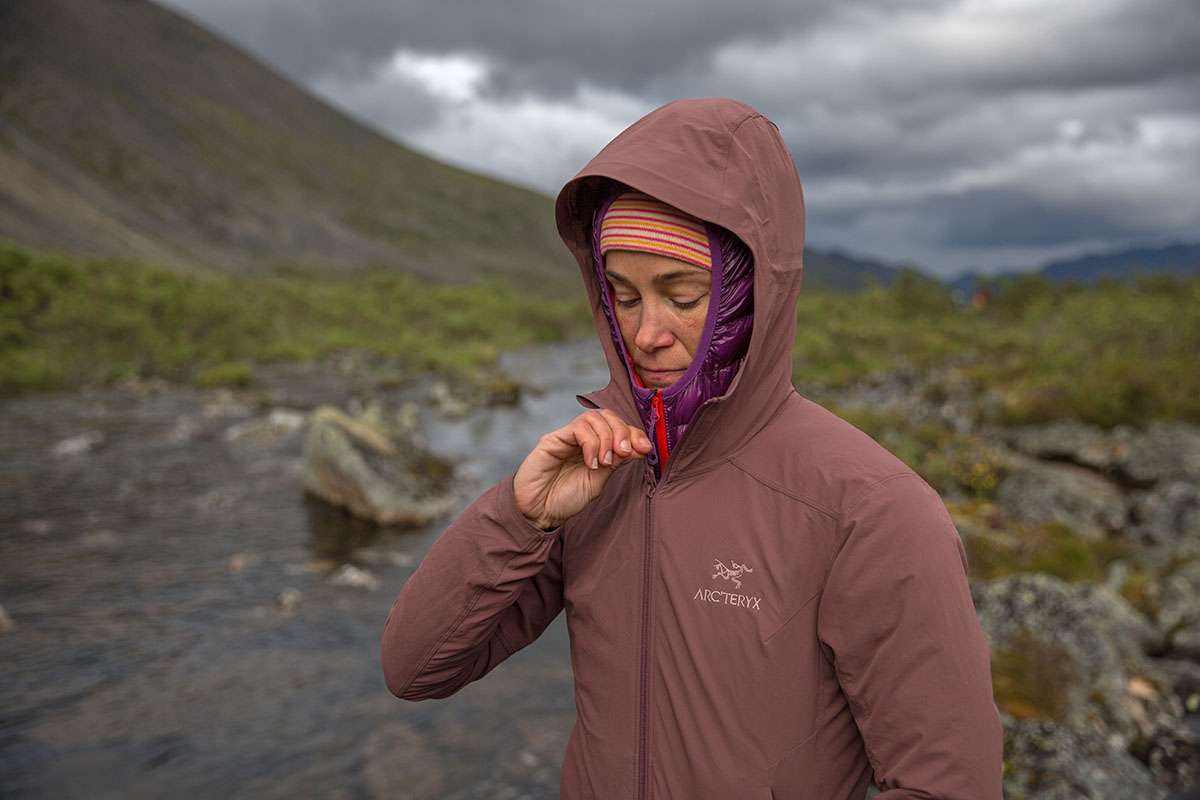
Moving away from Arc'teryx's lineup, Patagonia makes an intriguing alternative in their R2 CrossStrata Hoody. Like the Gamma Heavyweight, the CrossStrata comes equipped with hipbelt- and harness-friendly pockets and boasts excellent mobility for movement-dependent uses like ice climbing and ski touring. The hood isn't helmet-compatible, but it does slide easily underneath (rather than over) a climbing lid. Another difference is warmth, with the Gamma Heavyweight offering a boost for cold-weather activities, although the CrossStrata is no slouch and well suited for cool, shoulder-season conditions (similar to the standard Gamma Hoody). In the end, a final decision will likely come down to preferences on warmth, price, and features, with the Patagonia winning out in all except the first category.
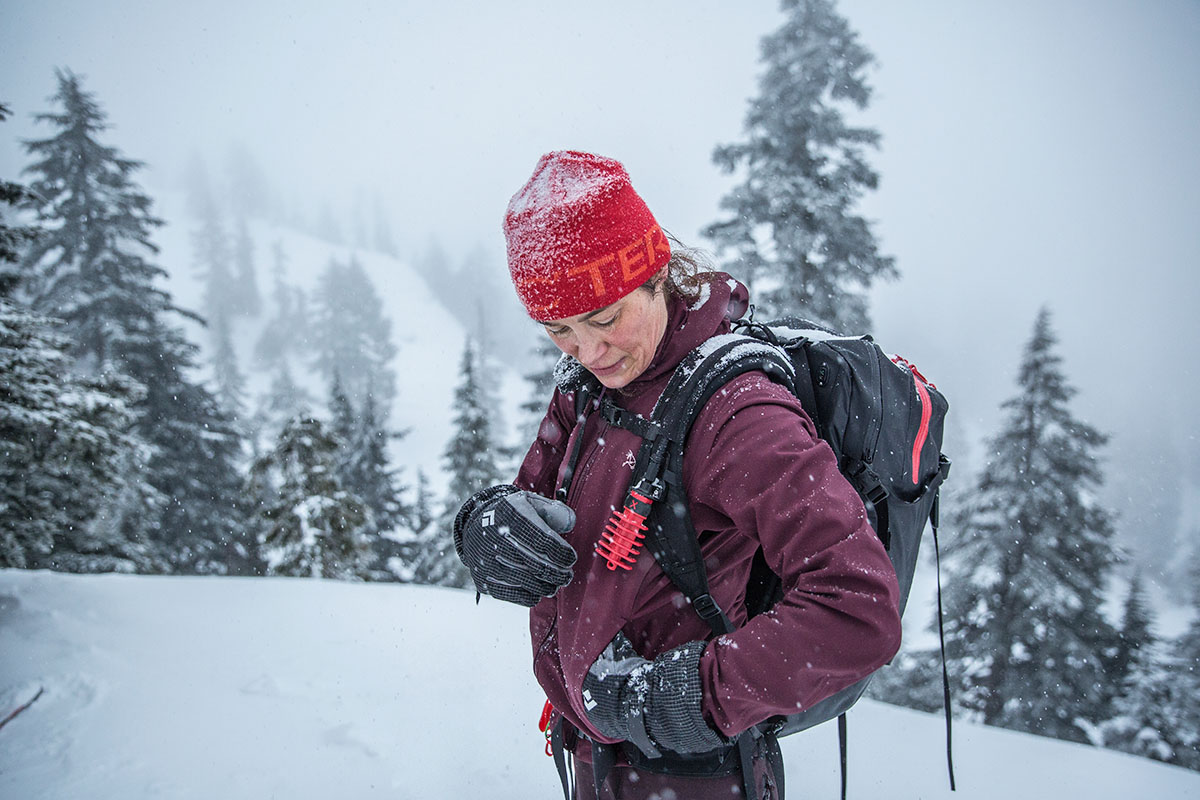
Finally, Mammut’s Ultimate VII SO Hoody flaunts an even more weather-ready build than the Gamma Heavyweight. In this case, Mammut opted for a 3-layer Gore-Tex Infinium construction, which offers great wind resistance but isn’t fully waterproof like many of Gore’s other membranes. The Ultimate VII SO also incorporates four-way stretch for freedom of movement and pit zips for quickly dumping excess heat. Rounding out the technical feature set, you get a helmet-friendly hood, a two-way main zipper, harness-friendly pockets, and a storm flap behind the front zipper for added assurance against moisture. In the end, we prefer the sleeker and more streamlined look of the Gamma Heavyweight, but the Mammut is the better breather and will save you over $100.
If you’re thinking about buying gear that we’ve reviewed on Switchback Travel, you can help support us in the process. Just click on any of the seller links above, and if you make a purchase, we receive a small percentage of the transaction. The cost of the product is the same to you but this helps us continue to test and write about outdoor gear. Thanks and we appreciate your support!
Depending on the seller, most products ship free in the United States on orders of $50 or more. International shipping availability and rates vary by seller. The pricing information on this page is updated hourly but we are not responsible for inaccuracies.